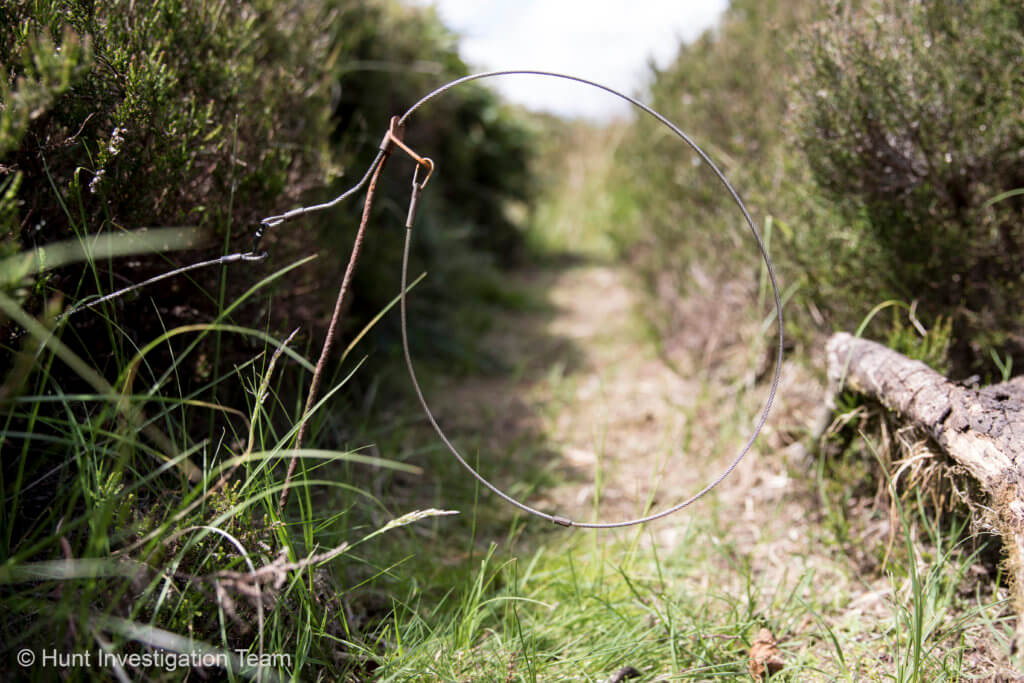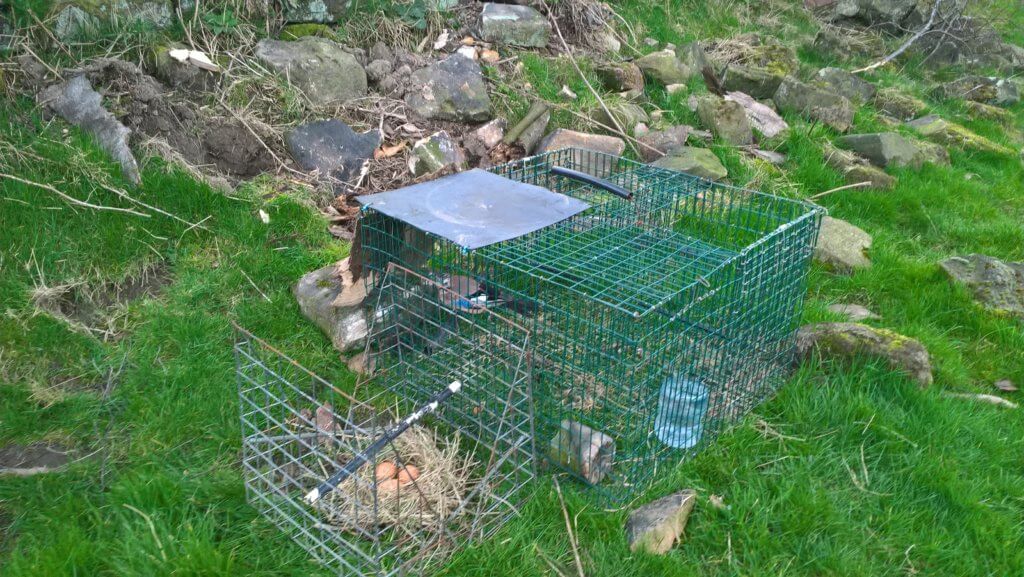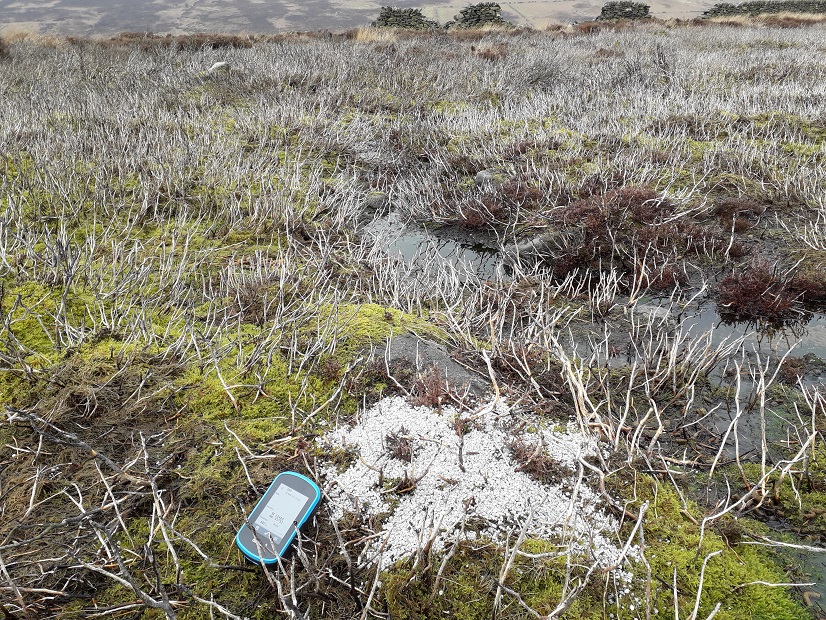
Thanks Mark, for allowing us the opportunity to introduce ourselves!
We are the Moorland Monitors – a group of local people from raptor, mammal and ecological backgrounds who want to combine forces to protect the wild species and wild spaces of the Peak District grouse moors. We believe that local people and visitors can play a huge role in opposing crime and cruelty on grouse shooting estates, and we want to mobilise them to do just that.

The Peak District National Park has a long and growing history of wildlife crime and ecological damage caused by grouse moor gamekeepers – and it’s not just the raptors! We want to get this on the agenda and mobilise the public in defence of all persecuted wildlife and decimated habitat. We intend to put an end to the ignorance and wilful blindness which have allowed grouse shooting estates to commit wildlife crime for generations. Grouse moor wildlife persecution and ecological destruction survive simply because most people are unaware of what is going on. When people are made aware, they are horrified and want to act.

Specialist groups such as the RSPB have repeatedly highlighted raptor persecution by gamekeepers in the area, including goshawk nest disruption[i] and illegal sparrowhawk trapping[ii]. The Hunt Investigation Team presented a heartbreaking expose into the systematic persecution of badgers, foxes and mountain hares here in spring 2017[iii]. The Sheffield Wildlife Trust have recently launched a campaign about stink pits, snares and traps on the boundaries of their nature reserves, which have the misfortune to be on the notorious Moscar Estate[iv]. Local campaigners are in frequent conflict with Natural England et al. about the repeated breaches of environmental law in heather burning and track building[v].

There has been much excellent work, but it has not yet been brought together to provide a full picture of daily life (and death) in the national park. The specialist groups and individuals work incredibly hard but often in isolation. There is no comprehensive voice for the Peak District uplands as a whole, as a complex and fragile ecosystem in its entirety, rather than as its individual parts. Moorland Monitors intends to do just this, bringing together all the issues and evidence, to monitor, advocate and protect on all levels. The missing hen harrier, the scorched moss, the disappearing adder, the polluted water and the snared badger matter equally to us: these are part of the same problem and deserve equal attention.
Along with the specialist organisations, the eyes, ears and action of the general public are now absolutely needed. We can see there is a massive problem – and a mass solution is required. Many thousands of visitors flock to the Park each season. By mobilising and empowering these people, the moorlands and native wildlife will have infinitely more protection, advocacy and chance of long term survival.
Moorland Monitors provide information and guidance to the public on the issues that need attention:
- Snare/trap patrols – to monitor illegal use in relation to birds and mammals;
- Nest monitoring – to ensure nesting is not disrupted at the crucial time;
- Peat bog measurement – to provide accurate, referenced evidence of illegal disturbance;
- Pollution evidence – where chemical grit medication enters the water system;
- Heather burning patrols – to record and report burning out of season, across streams and other breaches of legislation/guidance;
- Habitat monitoring – for damage and destruction in vulnerable locations such as active adder territory or in the vicinity of badger setts;
- Population densities – to demonstrate how different species survive/thrive/decline in the area;
- Other issues – illegal gas guns, illegal track building, planning permissions and so on.
This channels public concern into constructive team work and effective action. It will mean that the illegal and destructive practices employed by the gamekeepers can be highlighted and documented. Gamekeepers have never been under public scrutiny, which is how they have got away with so much crime and cruelty until now. We want the general public to be the eyes and ears of the moors, and to speak out for persecuted wildlife.

We are also campaigning to challenge and persuade local agencies to protect wildlife over shooting estate profits. This highlights the wilful blindness of key agencies such as land owners, park authorities, water boards and so on. These bodies could be powerful advocates for wildlife if they chose to do so.
We are optimistic about what can be achieved the input of local residents, recreational visitors and special interest groups (such as climbers, fell runners, walkers, birders, wildlife photographers etc who have a personal interest in protecting the area). The Peak District National Park could be a haven for the full spectrum of native upland fauna and flora, and we will keep fighting for this. We see the tide turning against driven grouse shooting – and the key role of the public in this battle. Please join us in monitoring the Peak District grouse moors. And if you are not local, why not see if you can develop a monitoring group in your own area!
[i] http://ww2.rspb.org.uk/Images/PeakMalpractice_tcm9-132666.pdf
[ii] http://www.bbc.co.uk/news/uk-england-derbyshire-13749356
[iii] https://huntinvestigationteam.org/moscar-investigation/
[iv] http://www.wildsheffield.com/ourmoors
[v] https://paulbesley.blog/2018/03/06/objecting-to-a-track-on-a-dark-peak-moor/
USEFUL LINKS:
[registration_form]
It sounds like a war zone! All strength to you in getting rid of the scourge of driven Grouse shooting.
So, I presume you are working with the H.I.T team?!….
Couple of things!….. Whilst I’m 100% behind exposing illegal activity, yourselves & H.I.T seem to be advocating illegal behaviour. If a legally set trap is found on private land, then it would be a criminal offence to tamper with it…..
I’ve asked this question of both groups and been blocked for my trouble, but I’ll ask again. Where do you stand legally, in following, recording, photographing & publishing names & accusations of local Keepers? I’m no expert, but seem a little grey! It’s almost like its guilty until proven innocent. The vigilante style concerns me.
ed – fair comment
Moorland Monitors do not work with the HIT and do not advocate tampering with traps – we are a monitoring group.
The work of the HIT and the RSPB were undertaken on Open Access Land as far as we know, and equally did not involve tampering with traps – they are investigative teams.
Many traps which are set in an apparently legal way can be used illegally (to trap and kill protected species, including badgers and raptors). There is nothing illegal or unethical about monitoring such situations – it is the gamekeepers’ self-imposed authority that deters people from doing this, not the law.
Hope this clarifies things.
Moorland Monitors.
Adam – thank you, that seems pretty clear. Maybe Ed will welcome the public getting involved to monitor whether grouse moor management sticks to the law and codes of practice.
I believe I said as much in my original post, Mark. One of my points is, as you well know Mark, if evidence is obtained of wrong doing, and that evidence doesn’t pass certain test from a legal stand point, then it can’t be used!
You are quite right to promote caution. It is only the very rich that can get away with untold criminality and be protected in doing so by the courts and government. The rest of us have to be seen to be scrupulously clean.
But we can educate. In the end, that is what is feared most, education.
Ed – not quite as much actually. Your brief mention looked rather tokenistic to me – but it’s, of course, difficult to tell. I expect you’ll be urging shooters to join the Moorland Monitors and help them in their work won’t you? We’re all on the same side really aren’t we? And standards need to be raised don’t they? The law doesn’t encourage good practice, it sets a lower bar to punish bad and illegal practice. For example, you’d welcome photos of poor burning practices wouldn’t you? Or would you not?
I don’t get to the uplands often but if I found a trap or snare, legally set or not, I would feel duty bound to destroy it if at all possible – because I do not recognise the “right” of these landowners and their lackeys, or even the judicial system, to define our wildlife as vermin to be killed for no good reason.
Bad law is defeated by ignoring it and acting against it until it is amended and made good law.
Simon – and you would have to take the consequences if caught and convicted. And that is a route followed by many in other causes.
I never act without due regard to the possible consequences of my actions – but some things just have a higher moral imperative.
I would salute that approach, something being lawful does not make it moral, people should use their own judgement in these matters.
I was arrested at my home early one Sunday morning and my possessions seized. The full story is here: https://bit.ly/2GAYCCe
You will have to accept the possible consequences however, much like the gamekeepers who persecute our wildlife these consequences can be very difficult to achieve.
Coles, where do the Moorland Monitors “appear to be advocating illegal behaviour”?
Quote… “Whilst I’m 100% behind exposing illegal activity, yourselves & H.I.T seem to be advocating illegal behaviour. If a legally set trap is found on private land, then it would be a criminal offence to tamper with it…..”
Can you explain which criminal offence you refer to please?
Hi there . Congratulations on your work. It is not in expensive personally in terms of financial (petrol) cost and general stress in my experience. I am particularly concerned at this time re merlin declines and am calling in Wales for more “Frydd” in fact forests of Frydd across the Cambrians; Beacons and Eryri; Frydd is the lovely mixes of birch, rowan, pine perhaps alder in the wetter flushes. This can be planted or rewilded I really do nt care; but it is our duty on a multiplicity of levels re upland bird declines and as a mitigation response to Paris 2015 and climate change. Please note Lord Deben’s call of the CCC for more tree planting; it would seem to me that NRW, NE and SNH have a duty in law to create this habitat re Merlin declines as it is a key hunting area across moorlands and Merlin are on some sites limited (I believe) by a lack of tree nest sites where heather is too thin and ground nesting anyway being a UK response to tree denuded hills.
You are to be congratulated on your vigilance and determination. There is criminality at the heart of all ‘bloodsports’ with a lot of money to be made from a grubby underworld
of wildlife persecution. Without the commitment of people such as yourselves it would be impossible to bring this to the notice of the general public. There seems to be very little that is respectable in the profession of game keeping, including pheasant shooting, which I have the misfortune to have experience of in the area of Lincolnshire where I live. The law is extremely weak and the loopholes are easily exploited. Thank you for your perseverance in helping to bring an end to driven grouse shooting. It cannot come soon enough for the welfare of our native wildlife.
I think there is considerable scope for this sort of approach and why not make it a national initiative? Simple, easily accessible, guidance on the most obvious forms of wildlife crime, what to record and how best to report it. When I lived in the Cambridgeshire fens I was amazed how keen the local Police were when responding to reports of hare coursing, often appearing in multiple vehicles (occasionally the Police helicopter) within 20 minutes of a phone call. They apprehended several people on more than one occasion as a result and for other incidents their appearance led to the immediate cessation of illegal activity. The fact that hare coursing still goes on reflects the fact that there aren’t too many people who recognise what it looks like, actively look out for it and phone the Police straight away. In Devon its illegal Fox hunting that is the problem locally and I phoned in an incident just yesterday by coincidence. The Police took it very seriously, suggesting phoning 999 rather than 101 for future incidents, and keen to take a full statement. It struck me that if enough people knew what to look for and phoned in all incidents then Fox hunting would be very difficult to get away with. At the moment hunts are able to act with seeming impunity because not many people bother to look out for, and report, what they see.
A national initiative would be so useful and not impossible to do. Individual groups and volunteers are producing excellent work, but it tends to be local and niche – and needs to be expanded out. We need proper support to develop a national strategy. Resources may be few, but resourcefulness is abundant amongst all of us committed to this issue. In the meantime, we hope that MM’s info will be transferable to other grouse shooting estates, and that people in other areas will take up and develop the ideas.
Absolutely fantastic – as you so vividly portray, it is hard to overstate the destruction in what theoretically should be a haven for wildlife. As has been said before on this blog, what is happening in the Peak District undermines the National Parks as a whole. That the main public bodies seem to be going along with what is happening is a disgrace – you forgot to mention the National Trust, by the way.
Whilst condoning illegal action puts one on the same level as the persecutors, there is obvious irony on the immediate call for the law to be obeyed in a place where so many people are disregarding it to the extent they feel quite happy to go onto other people’s land to persecute raptors – the same people who are the fiercest guardians of their own property rights.
I’d be honoured to join you in protecting our wildlife and habitats.
More power to your elbow. Without monitoring, nobody can produce evidence of harm. Consequently, those people deliberately and knowingly harming the countryside and wildlife won’t want it monitored. If you’re trying to mobilise people to help, try targetting those who suffer increased flooding and constant flood risk due to fast runoff from badly managed uplands. There are likely to be flood action groups in many vulnerable locations who are probably well aware of the problems of burning etc on managed grouse moors and would like it stopped.
It strikes me that the local wildlife trusts are in a position to advise their members as to the correct procedures to follow to ensure legal access, what constitutes illegal actions and what evidence should be collected.
There is certainly no lack of illegal action going on which will continue unchecked until it becomes far more unacceptable than it is at present. A booklet could be prepared and suggested to local wildlife trusts.
Indeed, local wildlife trusts can be instrumental in this. Sheffield & Rotherham WT have been outspoken on this issue, which is another great development locally.
A MM guidebook to the moors is currently in development and we hope this will be a handy reference guide for people out and about.
Mark, it wasn’t a token, but take it how you wish! If someone finds something iffy, by all means photograph it, pass it on to the authorities. I would encourage everyone to report illegal activity, Mark. No axe to grind, just asking questions.
Ed – ask away, but it would be nice if you answered them too.
I get confused on the moorlands – there are signs that say “Protect wildlife at all times” – and then you’re NOT supposed to destroy traps…?
As Rod Leslie suggests, let’s start with National Parks, especially those where DSG (e.g. PDNP, YDNP, NYMNP, NNP and LDNP – because of Lonsdale Estate’s Shap Fells SSSI) and intensive pheasant shoots (e.g. Brecon Beacons and South Downs) are major land uses. Then look at adjacent Protected Landscapes (e.g. North Pennines and Nidderdale AONBs). Restoration of Ffridd habitat and valley side woodlands will (I hope) be key plank of the BBNPA Management Plan review.
It’s interesting to note that many of the comments here that are advocating monitoring or evidence gathering of illegal acts have got at least one ‘dislike’. I can only read one motive into that.